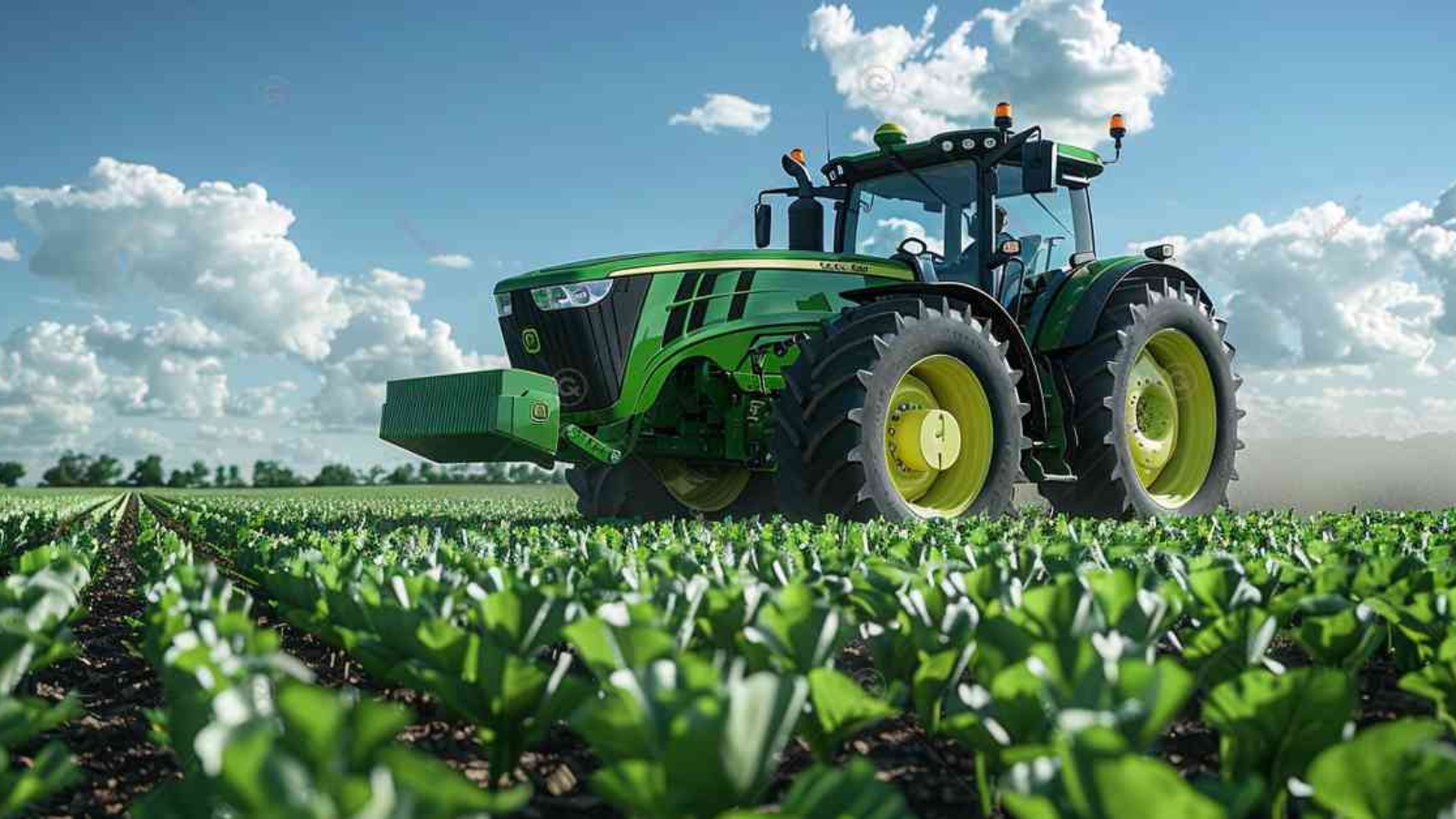Tractor implements are essential tools that enhance the versatility and efficiency of tractors, making them indispensable in modern agriculture. These implements attach to tractors to perform various tasks, from tilling and planting to harvesting and baling. This comprehensive guide explores the different types of tractor implements, their applications, and the benefits they offer to farmers. The aim is to provide a detailed resource for researchers, policymakers, and farmers, highlighting the significance of tractor implements in improving agricultural productivity.
Keywords: tractor implements, agricultural tools, farming equipment, tractor attachments, agricultural productivity
Introduction
Tractor implements have revolutionized farming by significantly increasing the efficiency and productivity of agricultural operations. These tools, which can be attached to tractors, perform a wide range of tasks that would otherwise require significant manual labor. From preparing the soil for planting to harvesting crops, tractor implements are vital for modern agriculture. This comprehensive guide delves into the various types of tractor implements, their specific applications, and the advantages they offer to farmers.
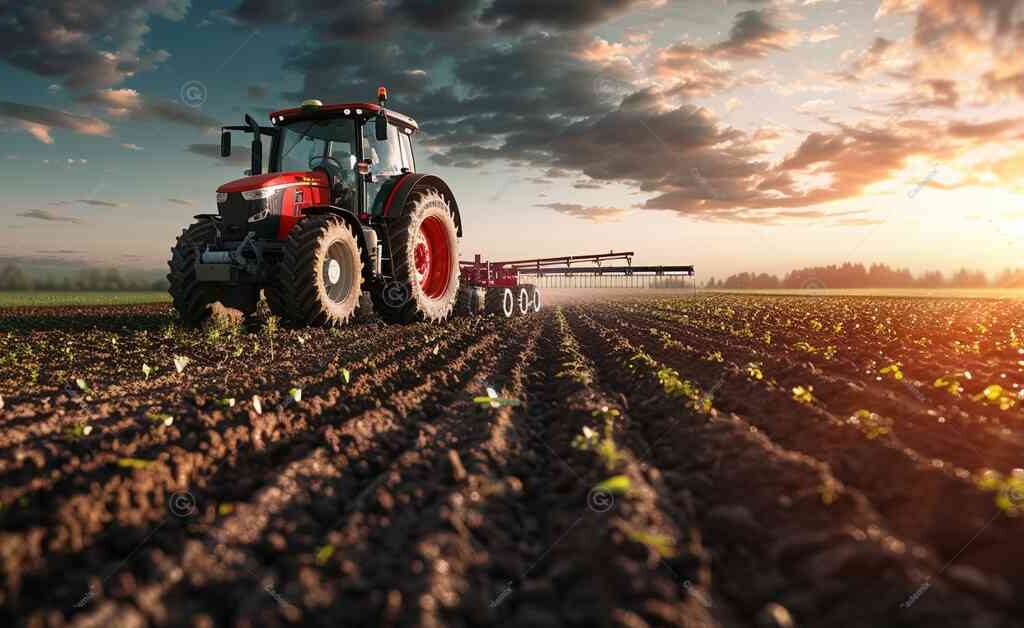
Types of Tractor Implements
Soil Preparation Implements
Plows
Plows are one of the most traditional and widely used tractor implements. They are designed to break up and turn over the soil, preparing it for planting. Plows come in various types, including moldboard plows, chisel plows, and disc plows, each suited for different soil conditions and farming practices.
- Moldboard Plows: These plows have curved blades that cut through the soil and turn it over, burying weeds and crop residues. They are ideal for deep tillage and soil inversion.
- Chisel Plows: Designed for minimal soil disturbance, chisel plows break up compacted soil layers without turning them over. This helps maintain soil structure and reduce erosion.
- Disc Plows: Equipped with concave discs, these plows cut through tough soil and crop residues, making them suitable for heavy and rocky soils.
Harrows
Harrows are used to break up and smooth the soil surface after plowing. They help create a fine seedbed and control weeds. Common types of harrows include disc harrows, spring-tooth harrows, and spike-tooth harrows.
- Disc Harrows: These harrows use rotating discs to chop up soil clods and mix crop residues into the soil. They are effective for primary tillage and seedbed preparation.
- Spring-Tooth Harrows: Featuring flexible tines, spring-tooth harrows are used for light tillage, seedbed preparation, and weed control.
- Spike-Tooth Harrows: These harrows have rigid spikes that penetrate the soil, breaking up clods and leveling the surface.
Cultivators
Cultivators are versatile implements used for secondary tillage, weed control, and soil aeration. They can be used before planting to prepare the seedbed or after planting to control weeds.
- Field Cultivators: Equipped with multiple shanks, field cultivators break up soil clods, incorporate crop residues, and prepare the seedbed.
- Row Crop Cultivators: Designed for inter-row cultivation, these implements control weeds between crop rows without damaging the plants.
Planting and Seeding Implements
Seed Drills
Seed drills are essential for precise planting, ensuring that seeds are sown at the correct depth and spacing. They improve seed-to-soil contact and germination rates.
- Conventional Seed Drills: These drills place seeds in rows at a uniform depth, making them suitable for a wide range of crops.
- No-Till Seed Drills: Designed for conservation tillage, no-till seed drills plant seeds without disturbing the soil, preserving soil structure and reducing erosion.
Planters
Planters are used for row crops such as corn, soybeans, and cotton. They ensure precise seed placement and spacing, which is crucial for crop uniformity and yield.
- Row Crop Planters: These planters drop seeds at specific intervals, ensuring uniform plant spacing. They are equipped with mechanisms for seed metering, depth control, and seed covering.
- Air Seeders: Using air pressure to distribute seeds evenly, air seeders are ideal for large-scale planting and can handle a variety of seed sizes and shapes.
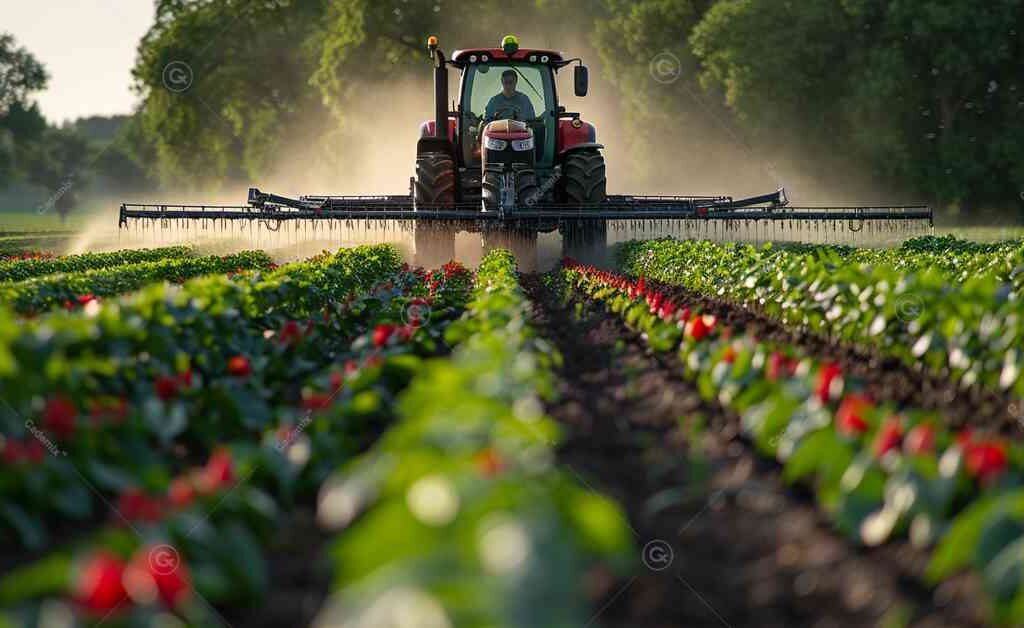
Fertilizing and Pest Control Implements
Fertilizer Spreaders
Fertilizer spreaders are used to distribute fertilizers evenly across the field, ensuring that crops receive the necessary nutrients for optimal growth.
- Broadcast Spreaders: These spreaders scatter fertilizer over a wide area, making them suitable for large fields.
- Drop Spreaders: Designed for precise application, drop spreaders release fertilizer directly below the spreader, reducing waste and ensuring uniform coverage.
Sprayers
Sprayers are used to apply pesticides, herbicides, and foliar fertilizers to crops. They come in various types, including boom sprayers, air blast sprayers, and backpack sprayers.
- Boom Sprayers: Equipped with long booms that extend over the crop rows, boom sprayers provide uniform coverage and are ideal for large fields.
- Air Blast Sprayers: These sprayers use a high-speed fan to disperse pesticides in a fine mist, making them suitable for orchards and vineyards.
- Backpack Sprayers: Lightweight and portable, backpack sprayers are used for spot treatments and small-scale applications.
Harvesting Implements
Combine Harvesters
Combine harvesters are multifunctional machines that perform reaping, threshing, and winnowing in a single operation. They are essential for harvesting grain crops such as wheat, corn, and rice.
- Self-Propelled Combines: These combines are equipped with powerful engines and advanced technology, making them suitable for large-scale harvesting.
- Tractor-Mounted Combines: These combines attach to tractors and are ideal for small to medium-sized farms.
Balers
Balers are used to compress and bundle crop residues, such as straw and hay, into compact bales for easy handling and storage.
- Round Balers: These balers create cylindrical bales that are easy to handle and transport.
- Square Balers: Producing rectangular bales, square balers are preferred for their ease of stacking and storage.
Specialized Implements
Front-End Loaders
Front-end loaders attach to the front of tractors and are used for lifting and moving materials such as soil, manure, and feed.
- Standard Loaders: Equipped with a bucket, these loaders are versatile and can handle a variety of tasks on the farm.
- Skid Steer Loaders: Compact and maneuverable, skid steer loaders are ideal for working in confined spaces.
Backhoes
Backhoes attach to the rear of tractors and are used for digging, trenching, and excavation.
- Standard Backhoes: These implements are suitable for a range of digging tasks, including ditching, trenching, and material handling.
- Compact Backhoes: Smaller and more maneuverable, compact backhoes are ideal for light excavation and landscaping tasks.
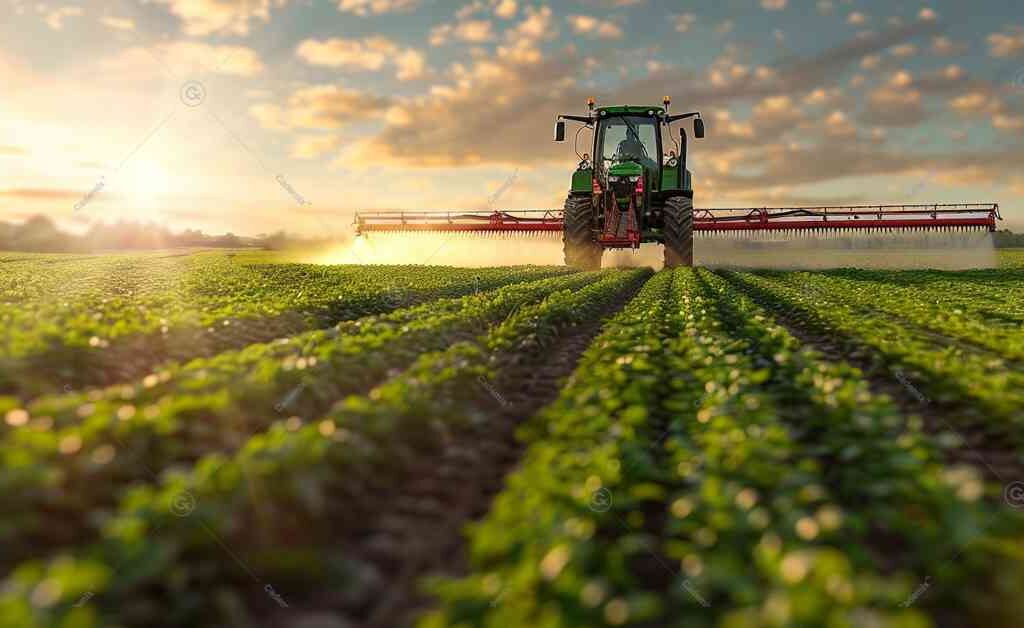
Applications and Benefits of Tractor Implements
Enhancing Productivity
Tractor implements significantly enhance farm productivity by automating labor-intensive tasks and reducing the time required for field operations. Implements such as plows, seed drills, and harvesters streamline the planting and harvesting processes, allowing farmers to manage larger areas more efficiently.
For instance, using a combine harvester can drastically reduce the time and labor needed for harvesting grain crops, while a seed drill ensures precise planting, leading to better crop establishment and higher yields. The efficiency gained from using tractor implements translates into increased productivity and profitability for farmers.
Improving Soil Health and Crop Yields
Tractor implements play a crucial role in improving soil health and crop yields. Implements such as plows and harrows prepare the soil for planting by breaking up compacted soil, incorporating organic matter, and creating a fine seedbed. This enhances soil aeration, water infiltration, and root development, leading to healthier crops.
Additionally, precision agriculture implements, such as variable rate technology (VRT) spreaders and sprayers, optimize the application of inputs like fertilizers and pesticides. This ensures that crops receive the right amount of nutrients and protection, reducing wastage and enhancing crop yields.
Reducing Labor Costs
By mechanizing various agricultural tasks, tractor implements reduce the reliance on manual labor and associated costs. This is particularly beneficial for large-scale farming operations where labor shortages and high labor costs can be significant challenges.
Implements such as balers and loaders automate the process of handling and transporting crop residues and materials, further reducing the need for manual labor. The labor savings achieved through the use of tractor implements can be redirected towards other farm activities, improving overall farm efficiency.
Promoting Sustainable Farming Practices
Tractor implements can promote sustainable farming practices by reducing the environmental impact of agricultural operations. Conservation tillage implements, such as chisel plows and no-till seed drills, minimize soil disturbance, reduce erosion, and enhance soil health.
Precision agriculture tools optimize the use of inputs, reducing the risk of nutrient runoff and environmental pollution. Additionally, organic farming implements, such as compost spreaders and biological pest control equipment, support the adoption of sustainable and eco-friendly farming practices.
Policies Supporting the Use of Tractor Implements
Subsidies and Financial Incentives
Governments can promote the adoption of tractor implements by providing subsidies and financial incentives to farmers. These programs can reduce the initial cost of purchasing implements, making them more accessible to smallholder farmers.
Subsidies for precision agriculture tools, conservation tillage equipment, and sustainable farming implements can encourage the adoption of practices that enhance productivity and environmental sustainability. Financial support for training and technical assistance can also help farmers maximize the benefits of using tractor implements.
Research and Development
Investment in research and development (R&D) is essential for advancing the design and functionality of tractor implements. Governments and research institutions can support R&D initiatives that focus on developing innovative, efficient, and affordable implements tailored to the needs of different farming systems.
Collaborations between the
public and private sectors can drive innovation and ensure that new technologies are effectively transferred to farmers. R&D efforts should also prioritize the development of implements that promote sustainable farming practices and address the challenges of climate change and resource scarcity.
Extension Services and Training
Extension services play a crucial role in promoting the adoption of tractor implements by providing farmers with the necessary knowledge and skills. Governments and agricultural organizations can enhance extension services to offer training on the use and maintenance of tractor implements, as well as best practices for maximizing their benefits.
Field demonstrations, workshops, and on-farm training programs can help farmers understand the advantages of different implements and how to integrate them into their farming operations. Extension services should also provide ongoing support to address any technical issues and ensure the successful adoption of new technologies.
Infrastructure Development
Improving rural infrastructure is essential for facilitating the use of tractor implements. Investments in road networks, transportation systems, and storage facilities can enhance farmers’ access to markets, reduce post-harvest losses, and support the efficient use of implements.
Governments can prioritize infrastructure projects that directly benefit the agricultural sector, such as the construction of rural roads, development of irrigation systems, and establishment of maintenance centers for farm machinery. Enhancing infrastructure can create an enabling environment for the widespread adoption of tractor implements and improve overall agricultural productivity.
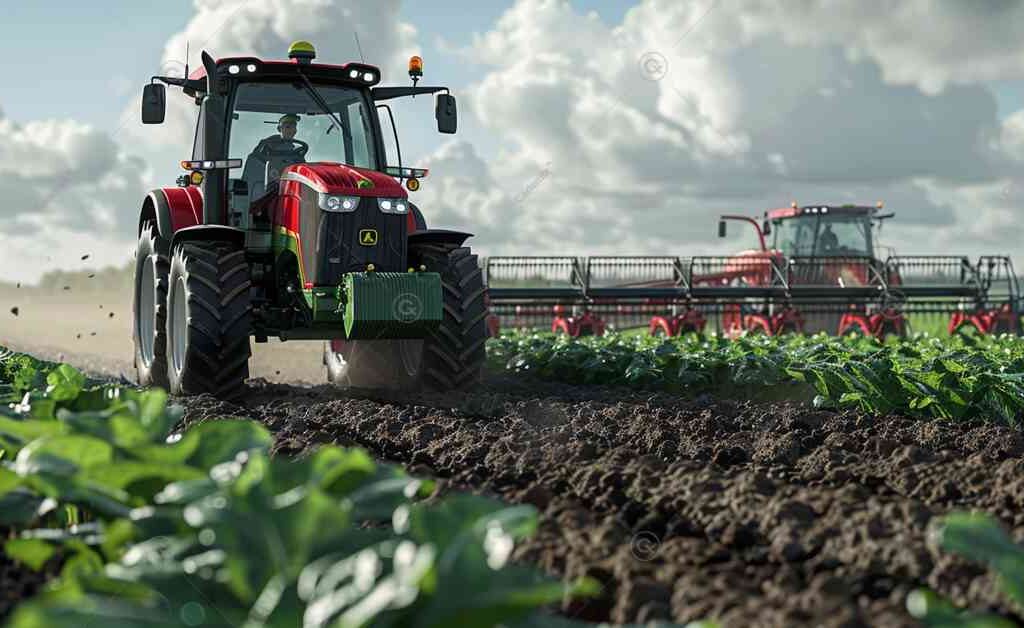
Case Studies of Successful Implement Adoption
Europe
France: Precision Agriculture Implements
France has made significant strides in adopting precision agriculture implements, such as GPS-guided tractors and variable rate technology (VRT) spreaders. These tools have enhanced the efficiency and sustainability of farming practices in the country.
Farmers in France have benefited from government support, including subsidies and technical assistance, which have facilitated the adoption of precision agriculture technologies. The use of these implements has led to increased productivity, reduced input costs, and improved environmental outcomes.
Here, You can acquire an online shop for attachments for tractors in Europe.
You can also find a Comprehensive Guide to know more of Buying FarmLand for Sale by Owner Here.
United States
Midwest: Conservation Tillage Implements
In the Midwest region of the United States, conservation tillage implements such as no-till seed drills and chisel plows have been widely adopted. These tools have helped farmers maintain soil health, reduce erosion, and enhance water retention.
Government programs and private sector partnerships have supported the adoption of conservation tillage practices by providing financial incentives, training, and technical support. The success of these implements in the Midwest demonstrates the potential of sustainable farming practices to improve productivity and resilience.
Canada
Saskatchewan: Seeding and Harvesting Implements
In Saskatchewan, Canada, the adoption of advanced seeding and harvesting implements has transformed agricultural practices. Farmers in the region use air seeders, combine harvesters, and precision planting equipment to optimize crop production.
Government policies and programs have played a crucial role in promoting the adoption of these implements. Financial incentives, research initiatives, and extension services have supported farmers in integrating advanced tools into their operations. The success of these implements in Saskatchewan highlights the importance of supportive policies and farmer engagement in achieving agricultural innovation.
Future Prospects and Recommendations
Enhancing Technology Access
Improving access to advanced tractor implements is essential for enhancing agricultural productivity and sustainability. Governments, research institutions, and the private sector should collaborate to develop affordable and scalable implements tailored to the needs of different farming systems.
Policies and programs that promote the dissemination of innovative technologies can enhance the accessibility and adoption of tractor implements. Public-private partnerships and international collaborations can play a crucial role in advancing agricultural technology and ensuring that smallholder farmers benefit from these innovations.
Promoting Sustainable Practices
Promoting sustainable farming practices through the use of tractor implements is essential for ensuring long-term food security and environmental health. Policies and programs that incentivize the adoption of conservation tillage, precision agriculture, and organic farming implements can encourage farmers to adopt practices that enhance productivity and sustainability.
Investments in training and extension services are crucial for supporting farmers in transitioning to sustainable practices. Community-led approaches that involve local stakeholders in the planning and implementation of sustainable agriculture projects can enhance their effectiveness and sustainability.
Strengthening Policy Frameworks
Strengthening policy frameworks is crucial for supporting the adoption and effective use of tractor implements. This includes formulating and implementing policies that provide financial incentives, support research and development, and enhance extension services.
Policymakers should engage with stakeholders, including farmers, researchers, and civil society organizations, to develop policies that are responsive to local needs and conditions. Effective monitoring and evaluation systems are essential for assessing the impact of policies and making necessary adjustments.
Enhancing International Cooperation
International cooperation is vital for addressing the global challenges of agricultural land management and the adoption of tractor implements. This includes sharing knowledge, technologies, and best practices, as well as providing financial and technical assistance to developing countries.
International organizations, governments, and development agencies should collaborate to support initiatives that promote sustainable agricultural practices and the use of advanced implements. Enhancing coordination and alignment of international efforts can maximize the impact of development programs and support the achievement of global food security and environmental sustainability goals.
Conclusion
Tractor implements are indispensable tools that enhance the versatility and efficiency of tractors, significantly improving agricultural productivity. By automating various farming tasks, these implements reduce labor costs, improve soil health, and promote sustainable farming practices. Effective policies and programs that support the adoption and use of tractor implements are essential for maximizing their benefits.
Addressing the challenges and leveraging the opportunities in agricultural land management requires coordinated efforts from researchers, policymakers, farmers, and other stakeholders. By promoting innovative solutions, sustainable practices, and supportive policies, we can ensure that agricultural land continues to provide the resources needed for a sustainable and prosperous future.

